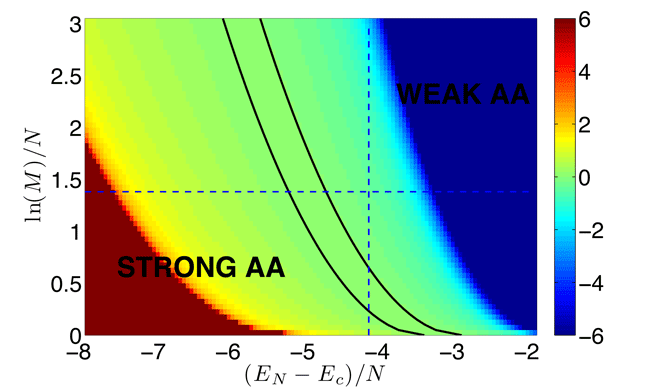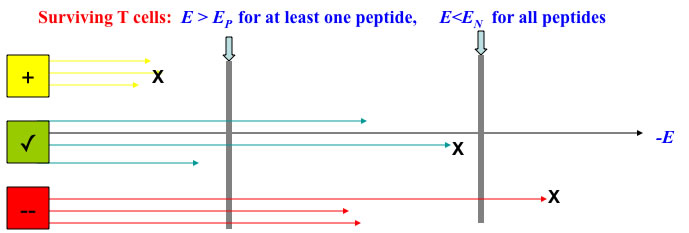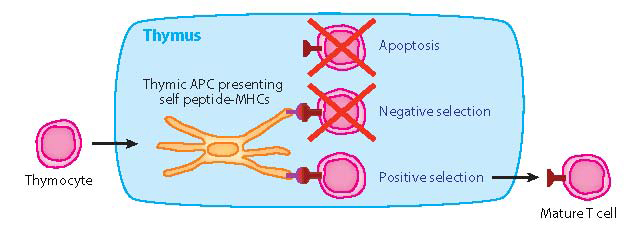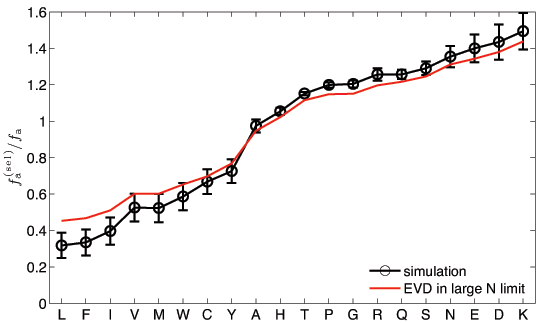Model & Analysis
![]() Focus on the energetics of binding of TCR to peptide:
Focus on the energetics of binding of TCR to peptide:

Assume a pairwise interaction between the peptide amino-acids and corresponding ones on the TCR, resulting in binding energy
 (Miazawa-Jernigan matrix J)
(Miazawa-Jernigan matrix J)

A. Kosmrlj, A. Jha, E.S. Huseby, M. Kardar, & A.K. Chakraborty, PNAS 105, 16671 (2008) (offlline)
![]() Thymic selection of TCRs is modeled using the interaction E as follows:
Thymic selection of TCRs is modeled using the interaction E as follows:
Candidate TCR sequences are randomly generated. (This ignores potential V(D)J generation bias.)
The binding energy of any TCR is calculated against a repertoire of M self-peptides.
![]() The selection condition is equivalent to the choice of the Extreme Value:
The selection condition is equivalent to the choice of the Extreme Value:

![]()
Characteristics of the Extreme Value Distribution
:
Binding energies of a particular TCR sequencs:
Extremal mean value:
~
,
where
and
are the mean and variance of interactions of the candidateTCR sequence.
Extremal standard deviation:
~
Note scaling in the large N limit;
(proteome)
Due to the shaprpness of the distibution in the large N limit, the seletion condition can be written as:
[
and
are the mean and variance of interactions of the candidate TCR sequence.]
![]() The above selection condition is reminiscent of the micro-canonical constraints in Statistical Physics.
The above selection condition is reminiscent of the micro-canonical constraints in Statistical Physics.
The "energy" involves interactions amongst the N amino-acids in the sequence
The "interaction" depends only on the sum of variances for the individual amino-acids
As such, in the large N limit, the probability to select a sequence can be written as a product
,
where
and
have to be obtained self-consistently from
and
.
Graphical solution for
![]()

![]()
Because of the restriction to an energy interval, there is a range of parameters where
= 0.
![]() How well does this work for finite N? (N=5 and M=10.000)
How well does this work for finite N? (N=5 and M=10.000)
A. Kosmrlj, A.K. Chakraborty, M.K., & E. Shakhnovich, PRL 103, 068103 (2009)




